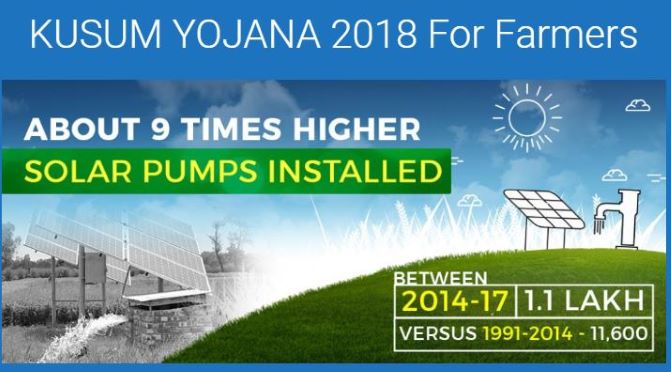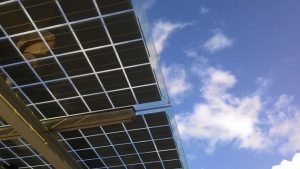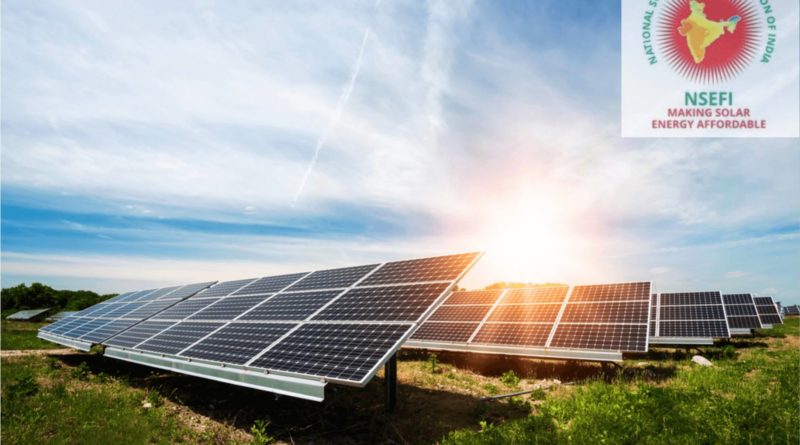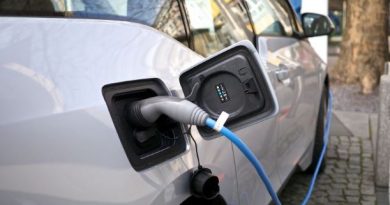Cabinet Launches Long pending KUSUM & 40 GW Solar Rooftop Scheme
With over ₹34000-crore Central Aid, the Modi cabinet approved the rural solar scheme called KUSUM and 40 GW solar rooftop scheme with an additional ₹11,814 crore allocation taking the whole tally of subsidies to over ₹46,000 crore by 2022 to promote solar among farmers and in the residential sector

The Cabinet Committee on Economic Affairs (CCEA) has approved the launch of the Kisan Urja Suraksha evam Utthaan Mahabhiyan. The KUSUM scheme has been in the works for some time and seeks to provide both financial security and more sustainable water access for farmers. By focusing on the establishment of solar plants on what terms barren land, it also seeks to work around the biggest challenge emerging for solar growth, land availability.
The scheme has three components:
- Component-A: 10,000 MW of Decentralised Ground Mounted Grid-Connected Renewable Power Plants.
- Component-B: Installation of 17.50 lakh standalone Solar Powered Agriculture Pumps.
- Component-C: Solarisation of 10 Lakh Grid-connected Solar Powered Agriculture Pumps.
By projecting a total expense of Rs 34,422 crores for the scheme, the government has made its intent clear, and one hopes that the actual work on the ground will have the same backing and support. The scheme hopes to provide 27.5 lakh solar pumps (17.50 lakh standalone + 10 Lakh Grid-connected).
Besides, as already announced earlier last week, farmers with barren or uncultivable land will be supported for installation of a total 10 GW of Solar Power Plants of an intermediate capacity of 0.5 to 2 MW each. 50,000 Grid-connected tube-wells/lift irrigation and drinking water projects are also part of the plan
Jobs, a major pain point for the economy are also set to get a boost with a scheme of this magnitude, with both an industrial stimulus for suppliers as well as self-employment opportunities equivalent to 6.31 lakh job years for skilled and unskilled workers, being highlighted in the government release.
The impact of the environment in terms of savings in Co2 emissions is projected to be a saving of about 27 million tonnes of carbon dioxide emissions per annum. The standalone solar pumps in themselves could potentially save 1.2 billion liters of diesel per annum.
Farmers with surplus power generation will be able to sell it to their discoms, providing further income opportunities for them. The good news is that with some states already rolling out broadly similar policies, this move by the center should encourage others to join in too, leaving India with a broader consensus on getting renewable energy to play a bigger role in the agricultural sector. Readers will note that agriculture, for multiple reasons, has been one of the toughest sectors to drive change in, unlike say, electricity, and transportation, both of which seem to have come around to a clear path to a shift to higher sustainability driven by renewables.

40 GW Solar Rooftop Plan
The CCEA also approved the second phase of the grid-connected rooftop solar programme for achieving cumulative capacity of 40,000 MW from such projects by 2022. The programme will be implemented with financial support of Rs 11,814 crore from the center.
With the election looming in April and May, the government scheme keeps in mind the group housing societies and resident welfare associations. The residential solar scheme will provide 40% of the cost of rooftop solar systems from government funds for arrays with a capacity of up to 3 kW. Larger systems – up to 10 kW in scale – will secure a 20% subsidy. Group housing societies and residential welfare associations can secure a 20% subsidy to power shared residential facilities for installations with a capacity of up to 10 kW per house and a total 500 kWp per association.
The timings could not have been better as both the schemes promote Solar in the agricultural as well as the residential sectors of the public domain after the SAUBHAGYA scheme missed its December 31 deadline. The new deadline now is March 31, 2019, just before the elections. The government plan(s) to electrify every home has become the Achilles Heel of the present government. The relationship of polls and subsidies have long prevailed in India which the present government has rolled out with the long-pending schemes.






